The Mega Show: The Art of India 2025
- Ranjan Kaul
- Jan 16
- 7 min read
By Ranjan Kaul

Curator Dr Alka Pande at The Art of India exhibition
A huge, 24-foot elongated bull with its head bowed greets one at the entrance to the Visual Arts Gallery at the India Habitat Centre, New Delhi, where the fourth edition of “The Art of India” is being held from 11 to 19 January 2025. Curated by Dr Alka Pande and partnered by Kotak Private, the show is an initiative of The Times of India with ten participating galleries. Unlike last year when part of the show was held outdoors and unexpected rain created problems for the organizers, the exhibition this year is designed to be completely indoors. Featuring over 200 artworks, the show is an eclectic mix of drawings, paintings, sculptures, and prints by Indian masters, senior artists, emerging and established contemporary artists, as also works by folk and tribal artists.

The Power by Paresh Maity, Brass and copper, 126 inches x 282 inches x 54 inches, 2018
The remarkably elegant sculpture by Paresh Maity titled Power at the entrance sets the tone for the show that has as its theme, “Peace, Hope, Beauty and Inclusivity.” Made entirely of brass temple bells and with copper for the horns, eyes, and the posterior of the tail, the sculpture reverberates with spirituality and the power of the divine, the temple bells signifying the sacred sound, Nāda Brahma (God as the personification of celestial sound).
Top Left to Right:
Flame Throwers by Achuthan Kudallur, Oil on canvas, 45.8 inches x 38.2 inches, 1973
Untitled by Achuthan Kuadallur, Acrylic on canvas, 47 inches x 47 inches, 2013
Bottom Left to Right:
Untitled by Amit Ambalal, Acrylic on paper, 23 inches x 31.5 inches
Untitled by Jaya Ganguly, Oil on canvas, 67 inches x 43 inches
The exhibition has been designed optimally with use of partitions in the specially curated, combined area of the Visual Arts and Open Palm Court galleries. The curator must be commended for leaving adequate spaces between the exhibits and in each partitioned area such that even with the scores of people on the opening day, it is not looking crowded. Achuthan Kudallur’s Flamethrower catches my attention. The late artist became a significant figure in India’s abstract art movement. Painted in 1973 when he was transitioning from figurative to abstract, this heavily textured, expressionist work in oil uses a bold red palette and is a veritable vortex of vibrancy. Here the artist draws upon the popular fire festival of fire of south India when thousands of devotees hurl fire at each other. See, for comparison, his later abstract acrylic work painted in 2013 also in the show. Two works in a similar genre of expressive abstraction by Amit Ambalal depict simians, one painted against a backdrop of leafy green and red and the other only red. An untitled large oil painting by Jaya Ganguly in her characteristic style depicts elongated bodies, hanging upside down, resigned to their fate, as it were, resonates with metaphorical meaning. Nobody’s Dogs by Paritosh Sen is another captivating work on display, where the artist has adopted an approach that is a mix of expressionism and cubism. Quite a few practitioners of modern art took to abstraction for their expression, believing in the dictum that an artist is neither a commentator nor a social reformer. Included in the exhibition, among others is a painting in mixed media by Prabhakar Kolte with patches of black, beige and white peeping through a mass of red; and an abstract painting using a muted palette using the impasto technique in oil by Shanti Dave titled Silent.
Top Left to Right:
Nobody’s Dogs by Paritosh Sen, Acrylic on canvas, 36 inches x 40 inches, 1987
Untitled by Prabhakar Kolte, Mixed media on, cardboard, 31 inches x 43 inches, 2004
Bottom Left to Right:
Silent by Shanti Dave, Oil on canvas, 28 inches x 51 inches, 1961
Untitled by F.N. Souza, Pen on paper, 29 inches x 20.5 inches, 1987
Top Left to Right:
Climbers by Gulammohammed Sheikh, 40 inches x 26 inches, 2024
Untitled by M.F. Husain, Watercolour on paper, 8 inches x 10 inches, 1985
Bottom Left to Right:
Phoren Soap – 1 by Bhupen Khakhar, Etching on paper, 7 inches x 7 inches, 1998
Self portrait in New York by Jyoti Bhatt, Etching, 19 inches x 14 inches, 1969
On display are some small works that may go unnoticed given the large number of exhibits. A neat pen-and-ink drawing by F.N. Souza of a young man standing atop a tree with naked damsels climbing up the tree or sitting on the ground with their hands folded as if in devotion (presumably a depiction of Krishna and Radha and gopis) stands in sharp contrast to Gulammohammed Sheikh’s sketchy serigraph titled Climber depicting some men climbing a tree while others reach for the sky from the treetop.
A show such as this would be incomplete without works by M.F. Husain, and there are indeed two by the figurative master: one of his signature horses and another small untitled watercolour of two demure-looking women bathers painted in his inimitable style, which harks back thematically to two works, both titled Bathers, by Cezanne and Degas. While the representation of printmakers is fewer in this show in relation to last year, two small prints stand out: Bhupen Khakhar’s etching titled Phoren Soap-I, and a strikingly imaginative self-portrait by Jyoti Bhatt, created during his visit to New York, where we see the abstracted figure of the artist in a black suit walking through the doorway of his sweater, as it were, on a wintry day wearing ochre gloves.
From Left to Right:
Migration by Shabir Husain Santosh, Acrylic on canvas, 36 inches x 48 inches, 2020
Migration by Katharina Kakar, Mixed media – wax, plastic, pigments, 30 inches x 30 inches x 1.5 inches, 2019
Shabir Hussain Santosh created his eloquent work Migration in 2020 during the Covid pandemic. Rendered in his typical visual language of abstracted figurative forms suspended in space and seemingly in perpetual motion, the work evokes rootlessness and displacement. Another work on displacement with the same title, Migration, by Katharina Kakar depicts multiple heads using wax, plastic, and pigments.
From Left to Right:
Earth’s Garden Song Skies Sigh by Poonam Bevli Sahi, Fibreglass, 52 inches x 48 inches, 2024
Untitled by Manish Chavda, Oil on canvas, 47.5 inches x 47.5 inches
Womb Series – 1 by Mandakini Devi, Digital print mounted on lightbox, 36 inches x 27 inches, 2023
From Left to Right:
Suvir Saran, Redefining Masculinity: Strength in Kindness, 13 inches x 19 inches, 2024
Lalitha Krishnan, Emergence, Paper clay (stoneware), 16 inches x 11 inches, 2024
G. Reghu, Head, Ceramic, 23 inches x 16 inches x 20 inches, 2024
Only a few sculptural works are part of the show. These include Lalitha Krishan’s surreally expressive work in paper clay and G. Reghu’s ceramic Head of a woman with one eye closed. We can also view a recent fibreglass sculpture by Poonam Bevil Sahi; her earlier work were primarily oil paintings reflecting feminine power. Here we see her expanding her oeuvre in a sculptural work that is imbued with symbolic references to renewal, fertility, reproduction, and mother earth, featuring a woman’s head, fish, flowers, and birds. Another symbolic work that explores the theme of womanhood is Mandakini Devi’s digital print mounted on a lightbox; the work is part of her “Womb Series” where the artist departs from the Saptamtrakas and instead seeks inspiration from Simone de Beauvoir’s avowal “One is not born, but rather becomes, a woman.”
From Left to Right:
Paroja Adivasis by Asha Thadani, Photograph printed on canvas, 24 inches x 33 inches, 1998
Twin Equine Symphony by Bandana Jain, Recycled packaging material, 48 inches x 72 inches, 2024
Asha Thadani is a photographer who has been working silently and committedly for some time with marginalized communities. Her solo show titled “Broken” exhibited early last year at the India Habitat Centre, New Delhi, portrayed poignantly the lives of ten Dalit communities. Her earlier works with adivasis are part of the show. Her camera captures moments of human connectivity in the black-and-white photograph of two young girls belonging to the Paroja Adivasis of Odisha gazing into the camera with a mix of wonder, hope, and vulnerability We seldom see works with inclusive themes; it is therefore heartening to see a few here that centre around social and environmental-related themes. A work by Suvir Saran challenges gender stereotypes by redefining masculinity as kindness personified; Manish Chavda depicts the interconnectedness between nature and humanity; Bandana Jain expresses her concern for the environment by using recycled packaging material in her exquisite work titled Twin Equine Symphony where we see a semblance of two galloping horses.
Adding value to the show this year are works by indigenous artists that showcase India’s rich and vibrant traditional art forms. While paintings by folk and tribal artists have been doing the rounds of galleries and art shows for some time now, it is refreshing to see a few highly imaginative, traditional masks and sculptures. These include a wooden Theyyam Bust used in divine rituals and a Bhuta Mask made with mixed alloy from coastal Karnataka (Bhutas are divine entities who are revered in the area). Also on view is an interesting sculpture of a family of rats riding an elephant by well-known artist Sukhnandi Vyam, who belongs to the Gond-Pradhan community.
From Left to Right:
Bhuta Mask, Karnataka, Mixed alloy, 11.5 inches x 12 inches x 5 inches
Theyyam Bust, Karnataka, Wood, 18.5 inches x 13.5 inches x 5.5 inches
Untitled by Sukhnandi Vyam, Wood, 30 inches x 21 inches x 22 inches
Given the large number of exhibits, it has not been possible to discuss more of the works in the exhibition in this curated review owing to space constraints. Undoubtedly, the annual mega exhibition, which has become a regular event in Delhi’s cultural calendar, gives an enriching glimpse of the journey of art in India. Indian modern and contemporary artists are increasingly making their presence felt in the world stage. While many of them have been influenced by their peers in the West, they have at the same time evolved a movement that is indigenous. Compared to the West and even China, the Indian art market is still small despite a burgeoning middle class. Events such as this go a long way in creating the market for and developing an enhanced appreciation of the nuances of the visual arts.
(All images of the works are courtesy of The Art of India.)

Ranjan Kaul is a visual artist, art writer and critic, curator, author and Founding Partner of artamour. His works may viewed on www.ranjankaul.com and his insta handle @ranjan_creates.


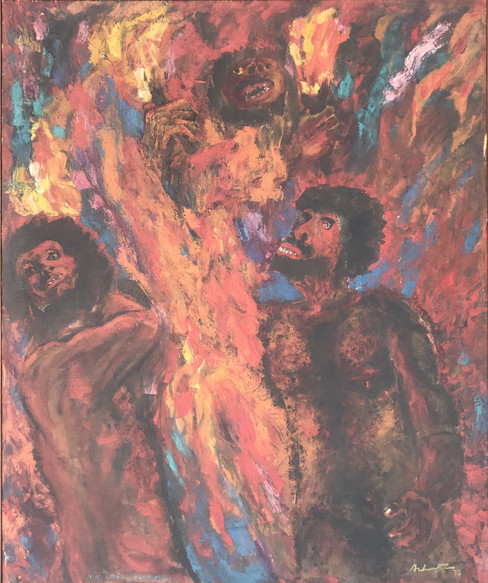



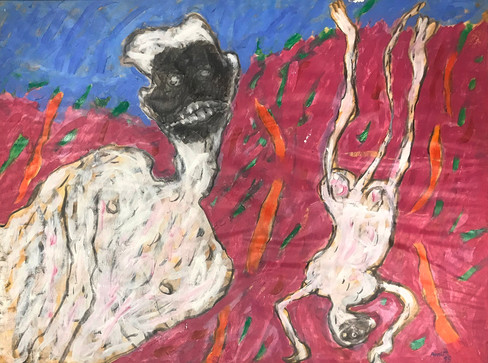

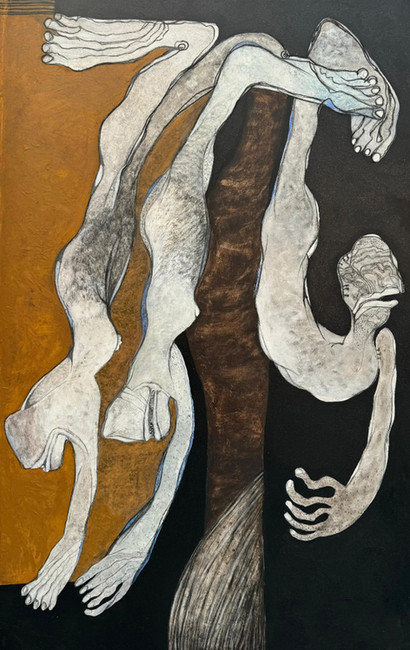









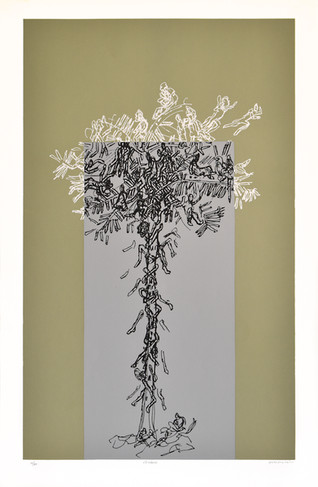



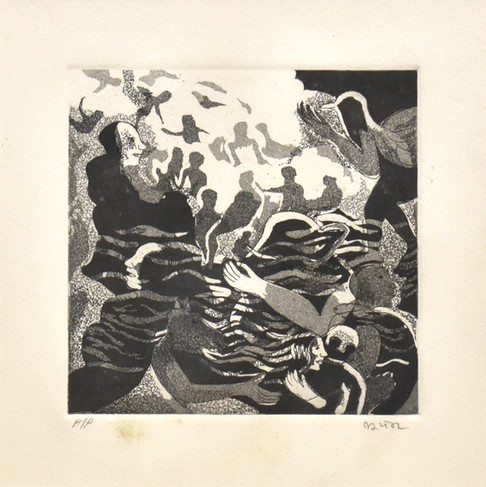




























Comments